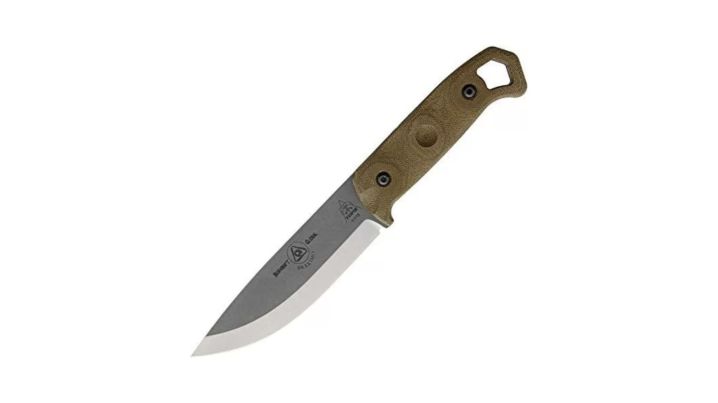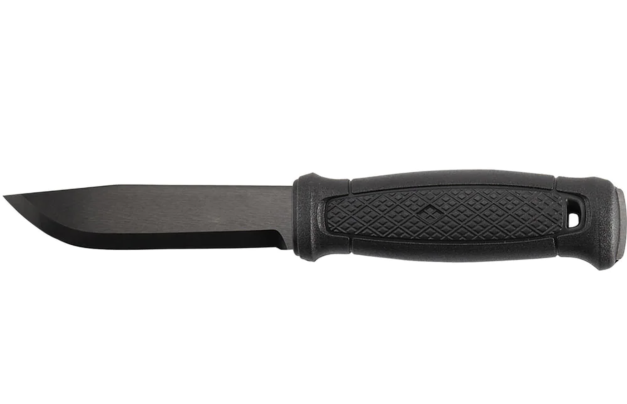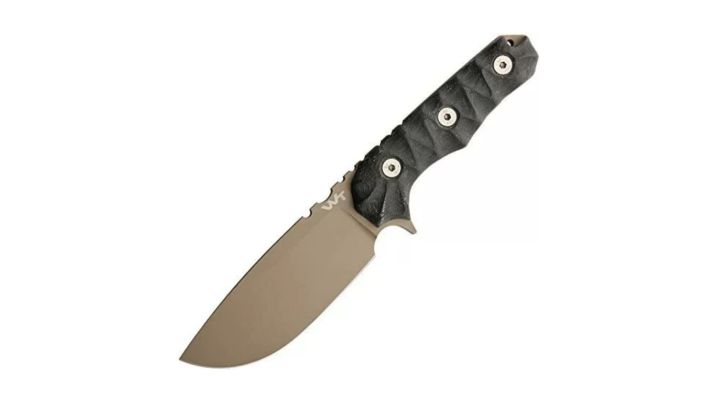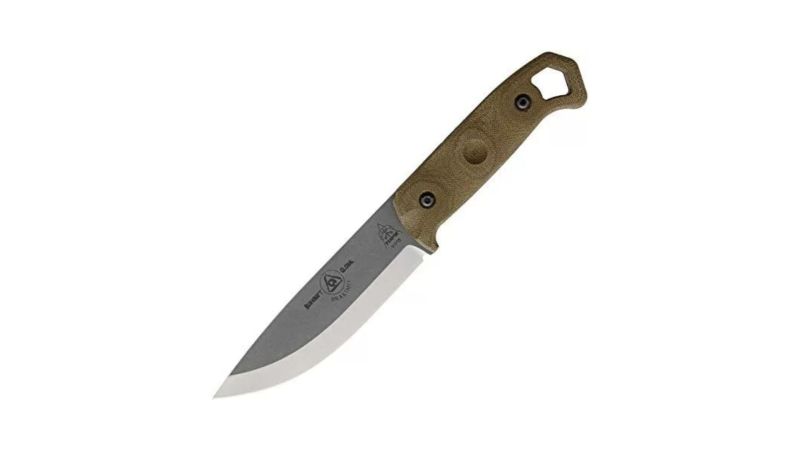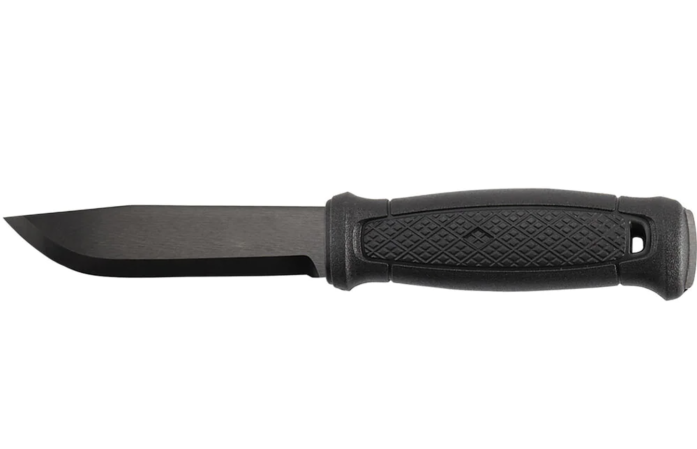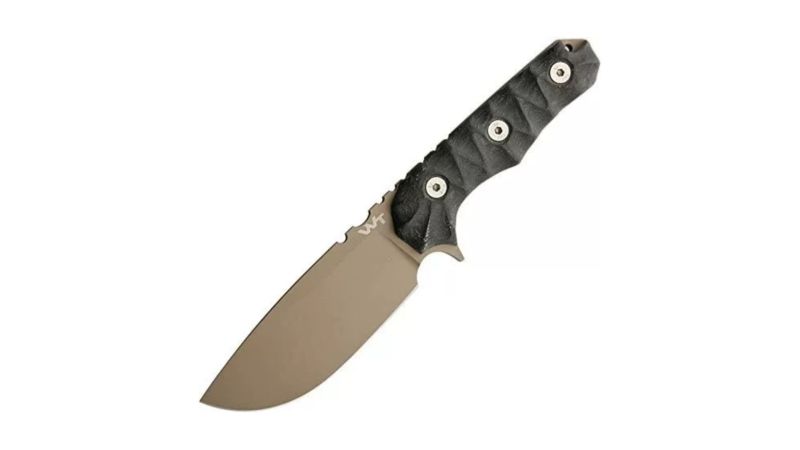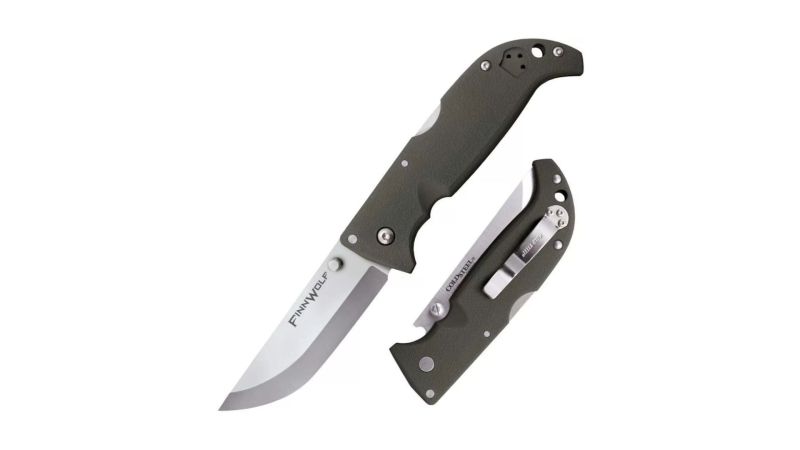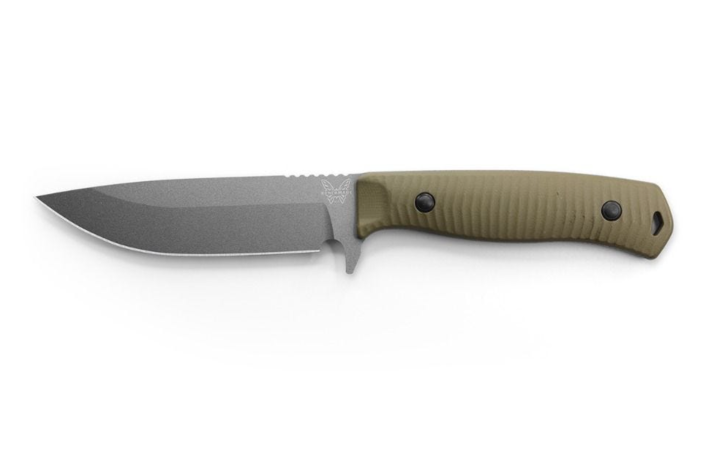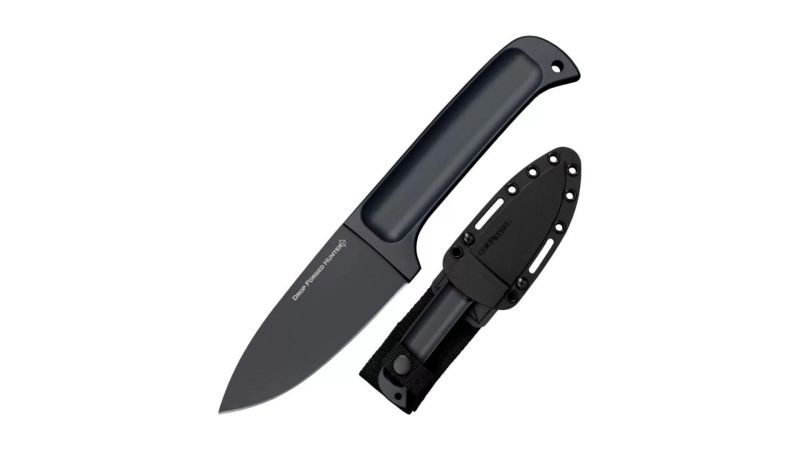We may earn revenue from the products available on this page and participate in affiliate programs.
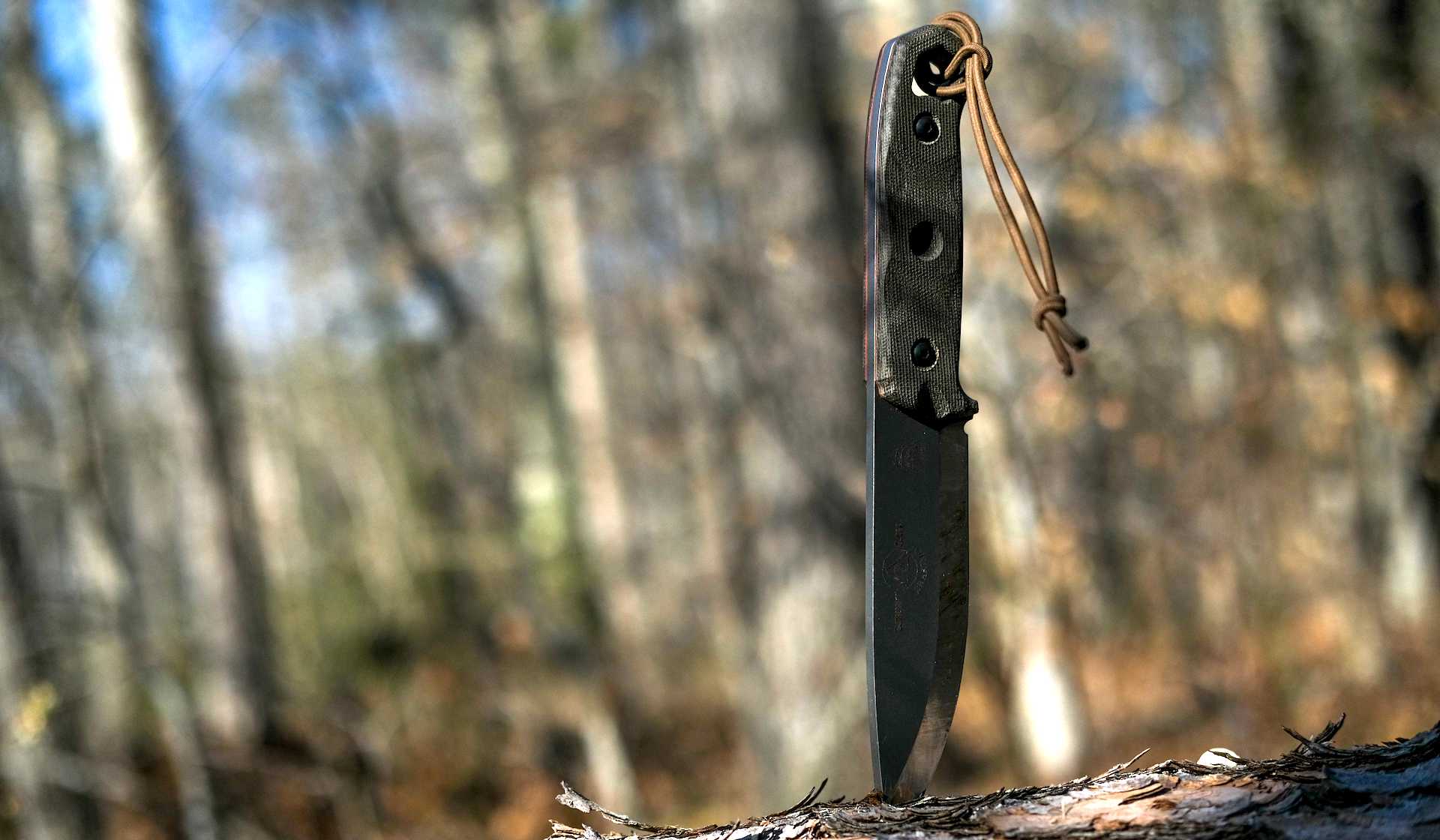
The phrase “bushcraft” is often dismissed by novices as just a fancy word for whittling sticks, a perception that makes even the best bushcraft knives seem overkill. The reality is that solid bushcraft skills can (and do) save lives in a wilderness survival setting. Whether it’s crafting an expedient litter to carry an injured person to safety, building a shelter to keep warm and dry, or crafting a greenwood grill to cook food, bushcraft techniques are invaluable tools in the repertoire of any serious outdoors enthusiast. Specialized knives which prioritize coarse tasks like stripping branches, drilling holes, and splitting logs are essential for bushcraft tasks.
The best bushcraft knives will commonly have a Scandinavian grind and are ideally full-tang to achieve the durability required for arduous outdoor tasks. All of the options listed here were personally tested by Task & Purpose gear reviewers — and all of them passed their tests with flying colors. Here’s what you need to know when looking for the best bushcraft knives.
How we tested
Bushcraft is, by necessity, in the bush, and the best bushcraft knives are meant to be taken outdoors and used in extreme survival situations. In the right hands, they can be used to build entire sets of camp furniture, complex structures, and roaring fires to keep you warm. It stands to reason that the way to test these knives would be to take every single one of them into a field environment and evaluate how they perform these essential tasks, while also seeing how they stand up to the elements, and how easy they are to resharpen. These knives were also subjected to strenuous tasks, including soaking the blades in wet salt and leaving them in open air overnight, being used to hack through logs in lieu of a hatchet, and being used to strike ferro rods to start fires. While they vary in their strengths and weaknesses, I’m confident in recommending any of the bushcraft knives on this list for intensive outdoor use.
Best Overall
TOPS Brakimo
Best Value
Morakniv Garberg
Editor’s Choice
Wander Tactical Lynx
Best Folding
Cold Steel Finn Wolf
Best All-Purpose
Benchmade Anonimus
Best Minimalist
Cold Steel Drop Forge Hunter
Our verdict on bushcraft knives
For most users, the TOPS Brakimo or Morakniv Garberg will do everything they need and more. These knives are hardly the be-all-end-all of bushcraft knives, but they perfectly exemplify the sub-genre of knives designed specifically for carving your own survival and comfort out of the wilderness. As always, if we missed any of your favorites, feel free to leave comments on social media letting us know which knife you prefer for bushcraft.
What to consider when buying bushcraft knives
Bushcraft knives are a very specific type of knife made for a very specific purpose, and therefore have different considerations that are specific to this particular variety. Bushcraft knives need to be set up specifically to work well on brush and wood, as opposed to prioritizing effectiveness in delicate applications like fileting a fish. Think of them as knife-shaped hatchets, dedicated to splitting, chopping, and peeling.
Key features of bushcraft knives
Blade grind
For bushcraft, a blade grind is a demand rather than a suggestion. The blade must be set up for durability above all else, and prioritizing cutting through wood, which leads to Scandi, flat, and saber grind knives dominating the market, with Scandi widely considered the standard. Picking the right blade geometry is essential to ensure that tasks like batoning logs, stripping saplings of their bark, and hacking through branches are as easy as possible, and more importantly, don’t destroy the blade.
90-degree spine
A crucial survival task is striking a ferro rod with a fire steel. Using a hard steel, with a 5-6 mm wide edge, cut completely flat at a 90-degree angle, you can strike a ferro rod to create sparks, allowing you to light whatever kindling you have. In a pinch, you can use the spine of a good bushcraft knife for this purpose, which is why they will usually feature perfectly flat spines with 90-degree corners on at least most of the blade. While this will inevitably damage the spine of the knife over prolonged use, it’s a solid emergency capability.
Full tang
Having a full tang means that the blade runs the entire length of the grip at full thickness. This is important for durability reasons, especially in a high-impact context like bushcraft that involves not only striking the blade, but also torsion, the possibility of accidentally hitting rocks, and other hazards not present in more delicate applications. While this adds weight and cost, the durability increase makes it more than worth it.
Exposed tang
An exposed tang means that the grip terminates just above the end of the tang of the blade, leaving a section protruding. This is very useful for scraping wood shavings from a log to use as kindling, to use as a fire steel, or to bash a car window in the event of a vehicle rollover or submersion.
Pricing considerations for bushcraft knives
Just because you want a tool that you can rely on in a life-or-death situation doesn’t mean that there’s a specific (and high) price tag that you have to clear to get something that will never let you down.
Budget
In the under-$100 price range, you’ll almost always find carbon steel blades in simple alloys, often made of imported materials. However, there are some real gems, like the Morakniv Garberg on this list. In this price bracket, one of the hazards is the lack of quality control that comes with lower pricing, which can be something that defeats the purpose of having a knife you can rely on. In this price bracket, brand is the most important aspect, so ensure that you’re purchasing from a brand that has a good reputation for quality control.
Mid-range
In the $100-$200 range lies a good number of the hard-used, American-made, mass-produced knives. In this price range you’ll see good quality control, designs by famous outdoors experts, and the beginnings of premium materials like CPM-3V with options from imported knifemakers like Cold Steel. In this bracket, you may find knives with artificially inflated prices due to brand tie-ins and celebrity endorsements, but the majority of the knives here will be priced according to their materials and designs. The TOPS Brakimo is a good example of this price range.
Premium
The upper limit doesn’t exist once you get above $200. In this category, you have everything from S30V Benchmade options that are little more than standard bushcraft knives made of more premium materials up to knives made by hand to your specifications by master knifemakers. In this price bracket, you are paying for unbelievable quality control, innovative designs, and exotic materials. There will also be knives in this price bracket that are priced according to their brand name, so ensure that if you’re unfamiliar with the knife that you’re looking at, look for reviews from knowledgeable sources.
FAQs about bushcraft knives
You’ve got questions. Task & Purpose has answers
Q: What are the best bushcraft knife brands?
A: Brands like TOPS, Morakniv, and Esee are known for making fantastic bushcraft knives, and companies like Benchmade produce bushcraft knives made from so-called super-steels which aid in corrosion resistance and edge retention.
Q: What size knife is best for bushcraft?
A: In my opinion, the sweet spot for regular use is from three to four inches, but there are larger and smaller knives that do very well for bushcraft purposes. Different people will have different preferences based on their experiences and equipment.
Q: What is the difference between a bushcraft knife and a survival knife?
A: A bushcraft knife is specifically designed for working with vegetation in the wild, and prioritizes this above other tasks. A survival knife is designed to accomplish multiple tasks in a survival environment, including bushcraft. Knives like the Benchmade Anonimus, Esee 6, and Wander Lynx all occupy a gray area between the two.
